Bursa
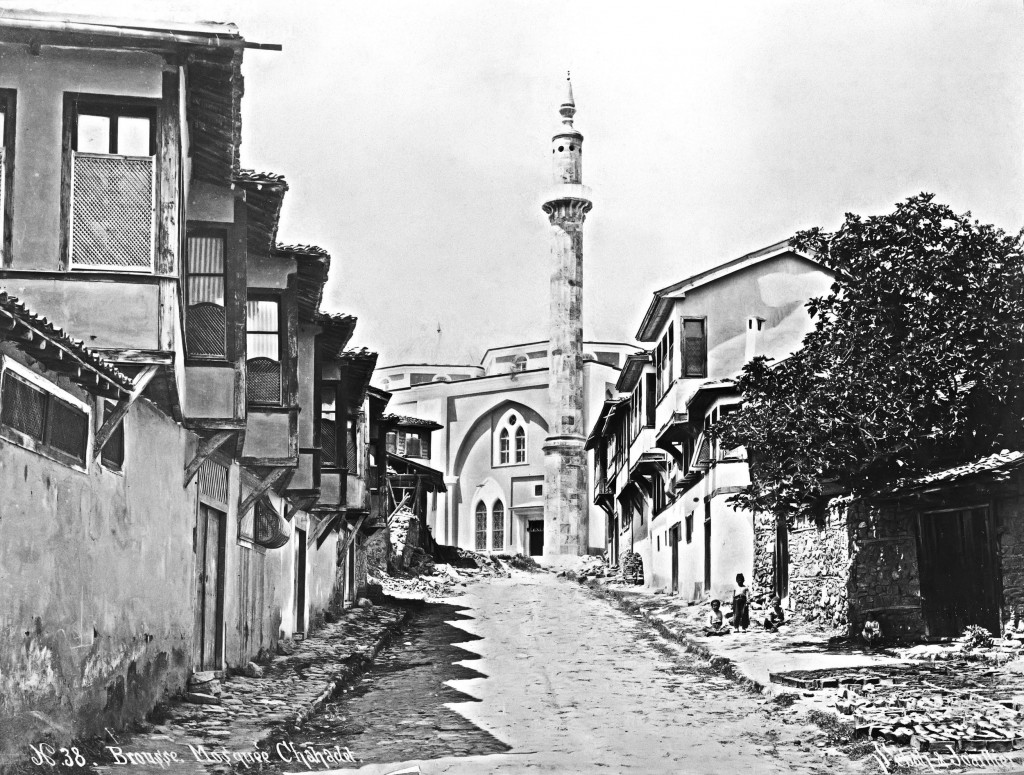
The first known settlement in Bursa was around 5200 BC. Later on, a Greek city was founded in Bursa named Cius. This city was granted to Prusias I and it became Prusa after being rebuilt. Bithynians ruled Prusa for 128 years and bequeathed it to the Roman Empire around 74 BC. After the Roman Empire, Bursa became a city of the Byzantine Empire. In 1326, Bursa was taken over by the Ottoman Empire and became the first major capital of the Ottomans. In 1363, another city, Edirne was captured and it became the capital instead of Bursa. Bursa was a commercial center for a long time until Istanbul was conquered. Most importantly, silk was produced in Bursa for the royals during the Ottoman Empire era. Alongside the produced silk, silk was also imported from Iran and China. Many silk products such as kaftans, embroidery and cushions were made in Bursa. After the Republic of Turkey was established in 1923, Bursa became an industrial center in Turkey. The industrial revolution triggered the population growth and Bursa became the fourth most crowded city in Turkey. Bursa was also an important city for immigrants. Many Turks who were living in the Balkans took refuge in Bursa after the Ottoman territories in Europe were lost. For example, 150.000 Bulgarian Turks moved to Bursa after being expelled.
-
WHEN TO VISITBoth winter and summer months are perfect to visit Bursa as there is a famous mountain Uludağ where you can enjoy the snow and winter sports.
-
LANGUAGETurkish is spoken in Bursa. Compared to Istanbul, the number of people who speak English is much less.
-
AIRPORTSThere are no international airports in Bursa.
-
ELECTRICType C
-
CURRENCYTurkish Lira (TL)
-
TIME ZONEGMT +3:00
-
POPULATION2.994.521
Winter in Bursa is quite cold especially in January and February, the temperature is between 2°C and 10°C. The cool season lasts from November till March in general. The summer months are quite hot, temperature is usually between 15°C and 30°C from June till the end of August
While it would be easier to travel around during the summer months, Bursa is usually visited during the winter. Uludağ receives snowfall most of the year, therefore, many tourists, both local and foreign, prefer to enjoy winter sports in Uludağ. All in all, the best time to visit Bursa completely depends on what you want to do and how you want to spend your time here.
-
 ALMIRA HOTELAlmira Hotel is a five-star hotel located right in the city center. It is only 35 kilometers away from Uludağ and 20 kilometers away from the ferry station. In the hotel, there is a free internet connection as well as a restaurant, bar, spa, meeting rooms and anything that you might need.
ALMIRA HOTELAlmira Hotel is a five-star hotel located right in the city center. It is only 35 kilometers away from Uludağ and 20 kilometers away from the ferry station. In the hotel, there is a free internet connection as well as a restaurant, bar, spa, meeting rooms and anything that you might need. -
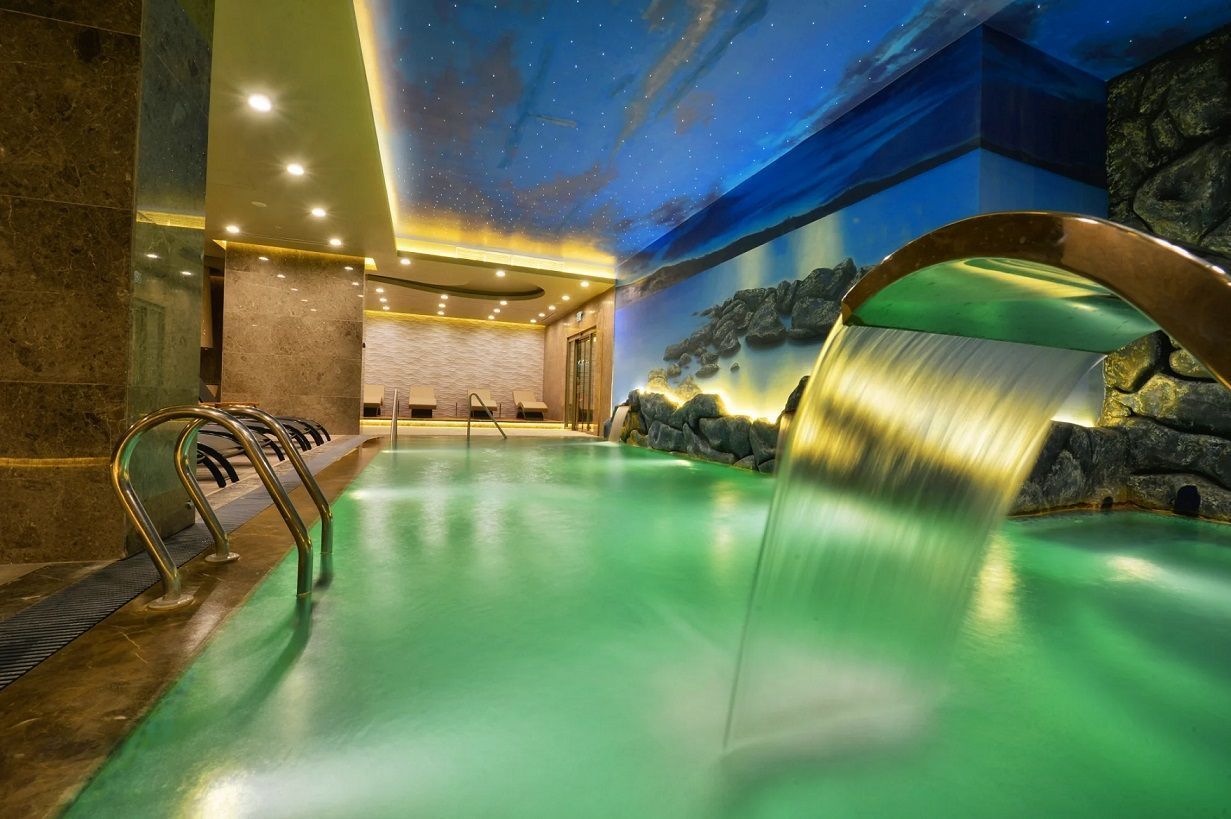 MARIGOLD THERMAL SPA HOTELMarigold Thermal Spa Hotel is a five-star boutique hotel where you can feel at home. The hotel has thermal waters, pool and Turkish baths for its visitors to use. If you also want to benefit from the thermal waters in Bursa, you can give this one a chance.
MARIGOLD THERMAL SPA HOTELMarigold Thermal Spa Hotel is a five-star boutique hotel where you can feel at home. The hotel has thermal waters, pool and Turkish baths for its visitors to use. If you also want to benefit from the thermal waters in Bursa, you can give this one a chance.
-
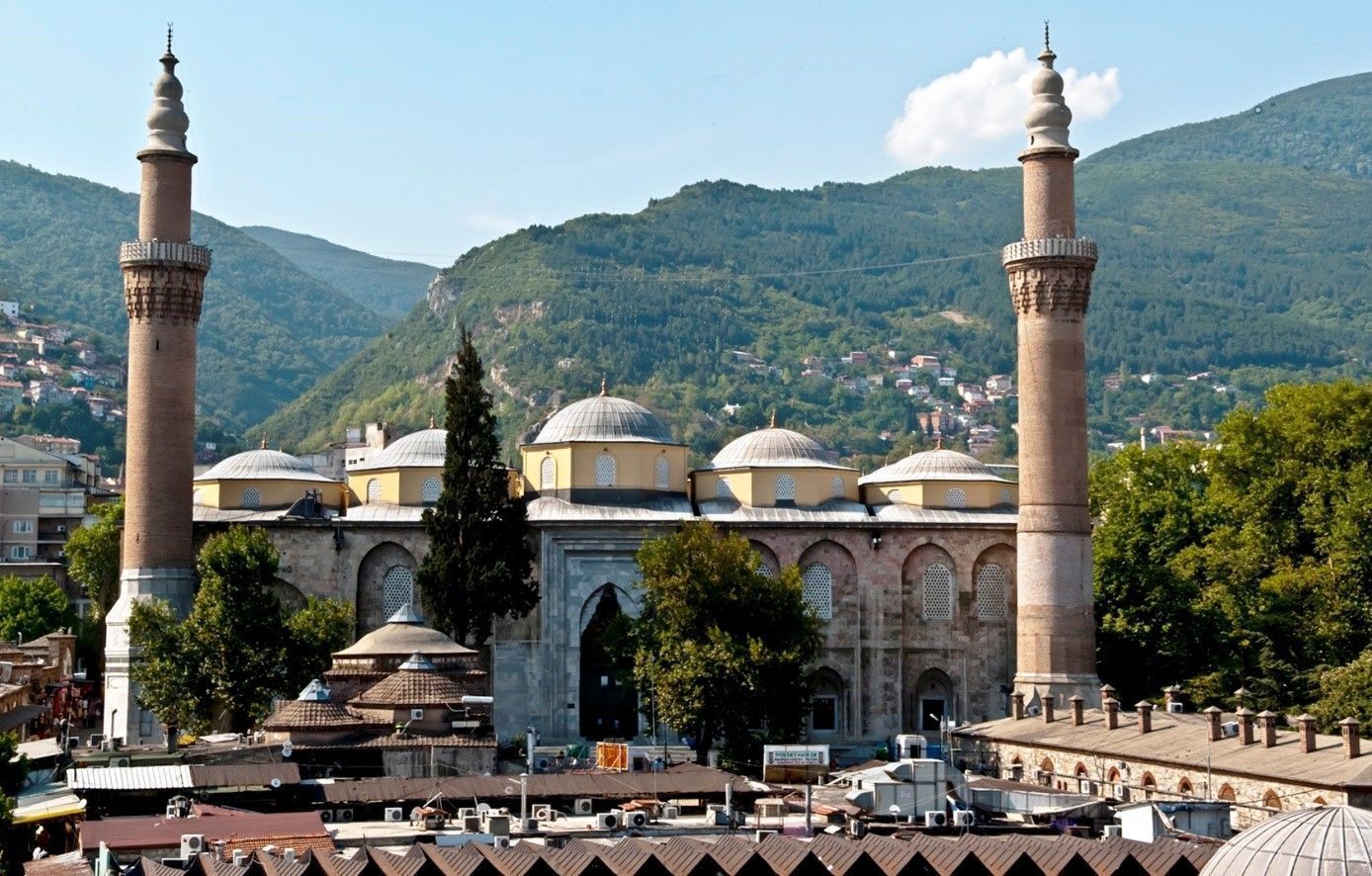 ULU CAMİ / GRAND MOSQUE
ULU CAMİ / GRAND MOSQUE -
 GREEN MOSQUE
GREEN MOSQUE -
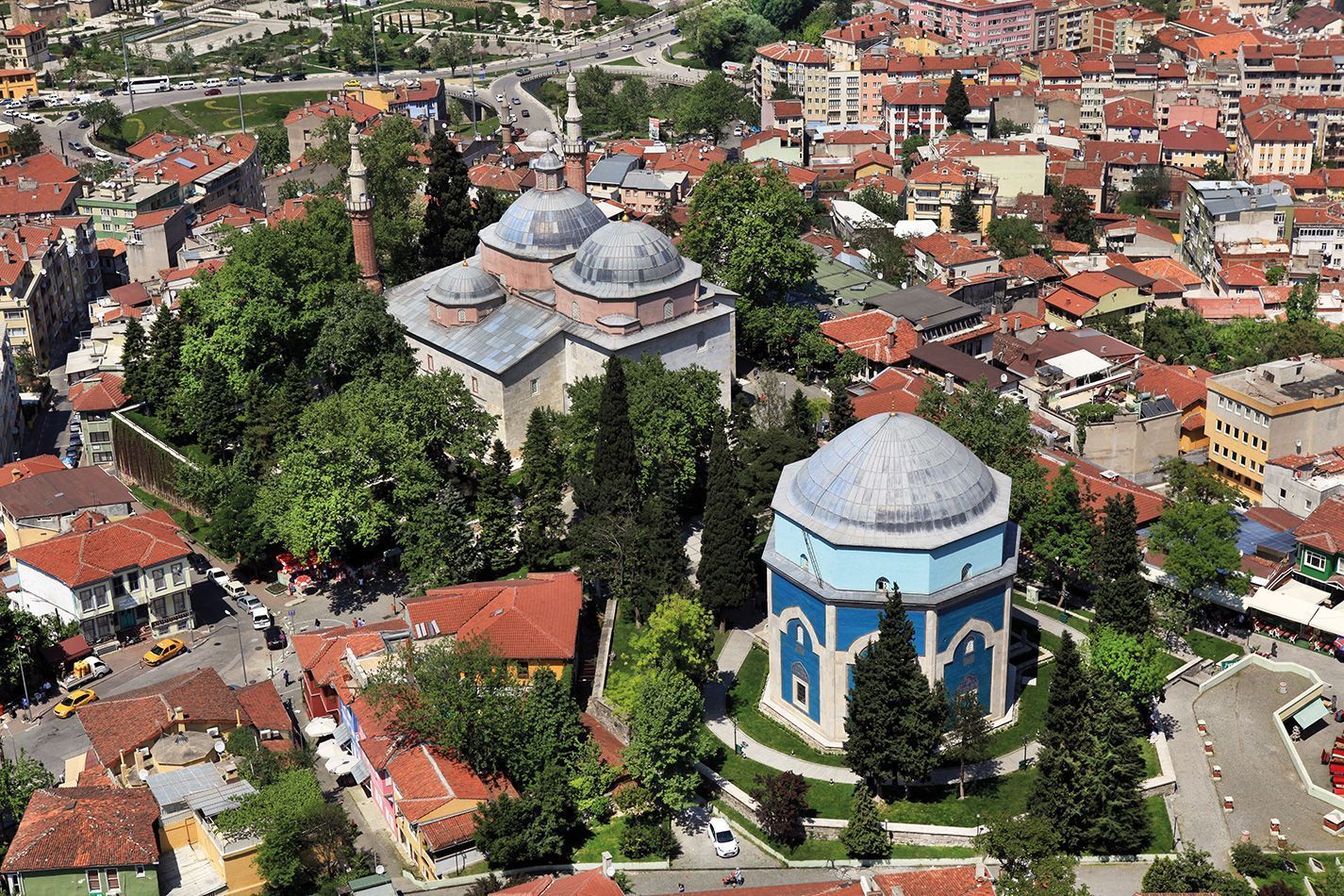 GREEN TOMB
GREEN TOMB -
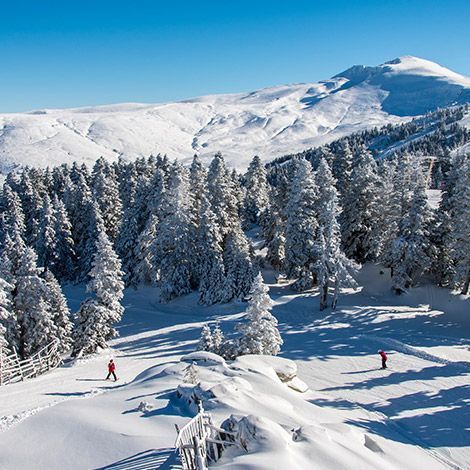 ULUDAĞ
ULUDAĞ -
 KOZA HAN
KOZA HAN -
 CUMALIKIZIK
CUMALIKIZIK -
 BURSA CASTLE
BURSA CASTLE -
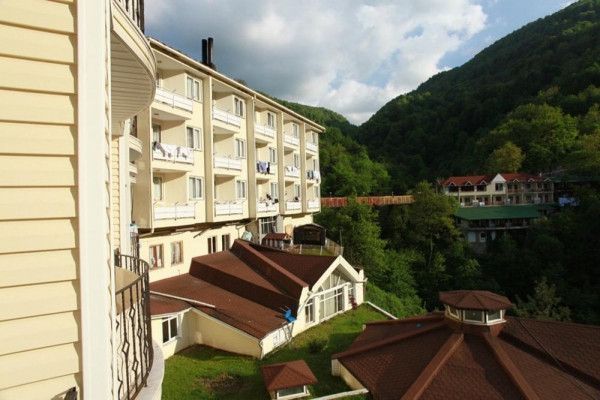 OYLAT HOT SPRINGS
OYLAT HOT SPRINGS -
 GRAND BAZAAR
GRAND BAZAAR -
 CULTURE PARK
CULTURE PARK
Oylat Hot Springs has been around since the Roman Empire era. It is known that the Romans were benefitting from the hot springs as well after the archeological excavations done in the area. The thermal spring water is believed to be healing. There is a legend about the daughter of a Byzantine Emperor. She got sick and the doctors could not find any cure. She was slowly dying. Then, they brought the girl to the thermal springs and washed her every day with the water found here. Day by day she got better and was cured of the deathly sickness that doctors could not find a cure for.
It is believed that the thermal springs in Bursa are good for stress, skin diseases, rheumatic diseases, calcification, joint inflammation as well as blood pressure problems.
In Oylat, you can also visit the Oylat waterfall and find peace with the sound of the running water while being surrounded by trees and plants. Oylat cave is another place the visitor would like to see. The cave is 665 meters long.
-
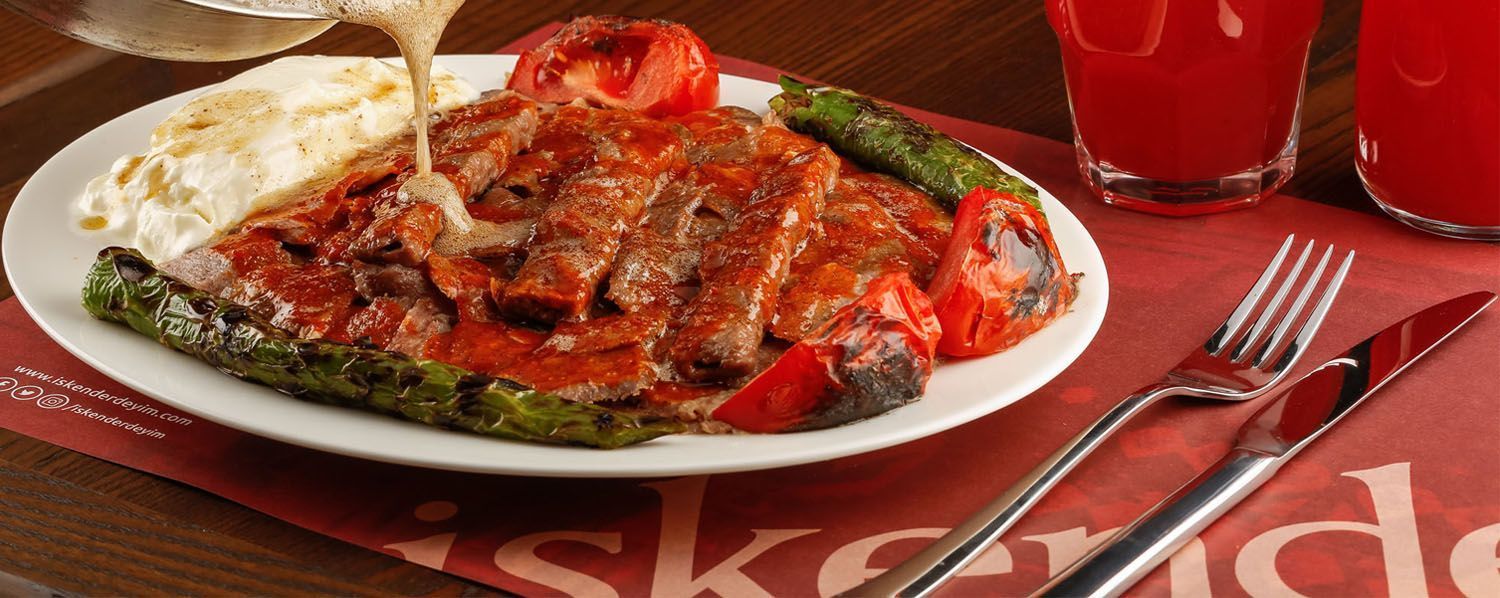 ISKENDER KEBABIskender Kabab was first found in Bursa in 1867 by a man named Iskender Efendi. Instead of the traditional way of cooking meat, which is putting a lamb horizontally on a heat source, he chose the best parts of the animal and placed them on a stick so that everybody would be able to taste the same and high-quality meat. He cooked the meat vertically allowing the meat to cook equally with the heat coming from the sides. Iskender Kebab is not the same thing as “döner kebab” as the meat used is quite different. In Bursa, you can taste the real Iskender Kebab because the Iskender Efendi’s sons have been continuing the family business in Bursa in a little blue restaurant. If you visit the place, you will see there is a long queue in front of the restaurant since it is a small place with the most delicious iskender kebab.
ISKENDER KEBABIskender Kabab was first found in Bursa in 1867 by a man named Iskender Efendi. Instead of the traditional way of cooking meat, which is putting a lamb horizontally on a heat source, he chose the best parts of the animal and placed them on a stick so that everybody would be able to taste the same and high-quality meat. He cooked the meat vertically allowing the meat to cook equally with the heat coming from the sides. Iskender Kebab is not the same thing as “döner kebab” as the meat used is quite different. In Bursa, you can taste the real Iskender Kebab because the Iskender Efendi’s sons have been continuing the family business in Bursa in a little blue restaurant. If you visit the place, you will see there is a long queue in front of the restaurant since it is a small place with the most delicious iskender kebab. -
 INEGÖL KÖFTEInegöl köfte’s source is a village in Bulgaria. However, a man who immigrated from Bulgaria to the Inegöl district of Bursa named İbrahim Besler, introduced this food as Inegöl Köfte to not only Turkey but to the entire world. İbrahim Besler was coming from a family whose profession was to make meatballs. What makes Inegöl köfte special is that there are no spices used other than salt while making it and it is rested for a day after being made.
INEGÖL KÖFTEInegöl köfte’s source is a village in Bulgaria. However, a man who immigrated from Bulgaria to the Inegöl district of Bursa named İbrahim Besler, introduced this food as Inegöl Köfte to not only Turkey but to the entire world. İbrahim Besler was coming from a family whose profession was to make meatballs. What makes Inegöl köfte special is that there are no spices used other than salt while making it and it is rested for a day after being made. -
 KEMALPAŞA DESSERTKemalpaşa dessert was first made in the milk houses in the district of Mustafakemalpaşa. The original name of the dessert is “Mustafakemalpaşa Peynir Tatlısı” however in time, the name changed into ”Kemalpaşa Tatlısı”. In the making of this special dessert, cheese is made from fresh milk. Then flour, semolina and eggs are added into the cheese and made into a dough. The dough is then cut into small rounds and baked in the oven. After that, a water and sugar mixture is boiled on the stove. The baked dough is poured into the boiling mixture allowing it to soak it up and get soft.
KEMALPAŞA DESSERTKemalpaşa dessert was first made in the milk houses in the district of Mustafakemalpaşa. The original name of the dessert is “Mustafakemalpaşa Peynir Tatlısı” however in time, the name changed into ”Kemalpaşa Tatlısı”. In the making of this special dessert, cheese is made from fresh milk. Then flour, semolina and eggs are added into the cheese and made into a dough. The dough is then cut into small rounds and baked in the oven. After that, a water and sugar mixture is boiled on the stove. The baked dough is poured into the boiling mixture allowing it to soak it up and get soft. -
 WALNUT LOKUMWalnut lokum is a special dessert made in Bursa and it is made for special occasions such as weddings. However, it is not your typical Turkish delight if you have mistaken “lokum” for that. It is in fact completely different. Yeast, milk, flour, powdered sugar are all mixed together and baked potatoes are added in to make a dough. The dough is thinned down. Walnut, cinnamon, powdered sugar and tahini is put on the thin dough and then rolled. The rolled dough is cut into small pieces and baked with some egg yolk on top.
WALNUT LOKUMWalnut lokum is a special dessert made in Bursa and it is made for special occasions such as weddings. However, it is not your typical Turkish delight if you have mistaken “lokum” for that. It is in fact completely different. Yeast, milk, flour, powdered sugar are all mixed together and baked potatoes are added in to make a dough. The dough is thinned down. Walnut, cinnamon, powdered sugar and tahini is put on the thin dough and then rolled. The rolled dough is cut into small pieces and baked with some egg yolk on top. -
 TAHİNLİ PİDETahinli pide is special to Bursa and it is different from the other ones that can be found in other cities in Turkey. Tahini is poured on top of the dough and baked in the stone oven which is what gives its unique taste. If you visit Bursa, definitely buy one of these for breakfast.
TAHİNLİ PİDETahinli pide is special to Bursa and it is different from the other ones that can be found in other cities in Turkey. Tahini is poured on top of the dough and baked in the stone oven which is what gives its unique taste. If you visit Bursa, definitely buy one of these for breakfast. -
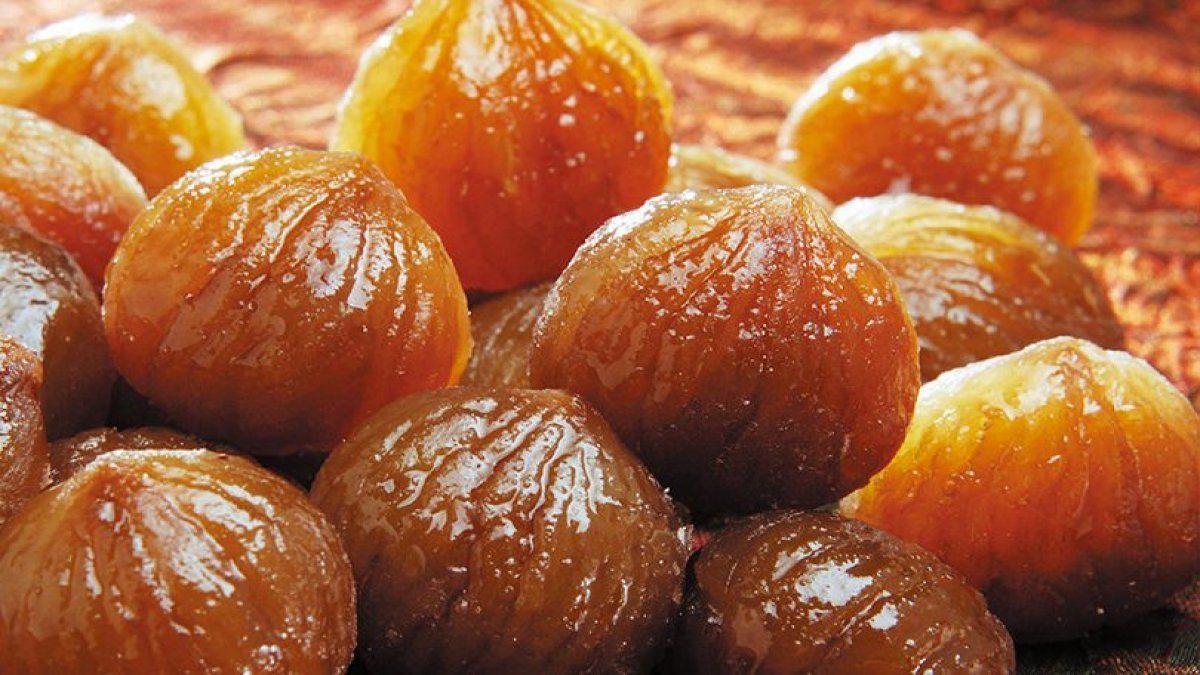 KESTANE ŞEKERİKestane şekeri is basically candied chestnuts. The chestnuts grow in Uludağ and the candies are prepared from these chestnuts collected from the mountain. After chestnuts are peeled off their shells, they are boiled with water and sugar. The process is not as easy as it may sound because there are a lot of factors that come into play when it comes to making the perfect candied chestnut. Kafkas is a famous brand in Bursa that is known for its candied chestnuts if you want to try it out.
KESTANE ŞEKERİKestane şekeri is basically candied chestnuts. The chestnuts grow in Uludağ and the candies are prepared from these chestnuts collected from the mountain. After chestnuts are peeled off their shells, they are boiled with water and sugar. The process is not as easy as it may sound because there are a lot of factors that come into play when it comes to making the perfect candied chestnut. Kafkas is a famous brand in Bursa that is known for its candied chestnuts if you want to try it out. -
 PEACHBursa is also famous for its peach. The best peaches in Turkey are produced in Bursa. Bursa’s peach is known to be quite juicy. If you like peach, you can try it while you are visiting Bursa, directly from the orchards.
PEACHBursa is also famous for its peach. The best peaches in Turkey are produced in Bursa. Bursa’s peach is known to be quite juicy. If you like peach, you can try it while you are visiting Bursa, directly from the orchards.
-
HISTORICAL LANDMARKSOne day would be spent by only visiting important landmarks and mosques in Bursa since they are located in close proximity to each other.
-
ULUDAĞClimbing the top of Uludağ, exploring the shops and cafes or skiing would take an entire day as well.
-
VILLAGESThere are many historical villages to see in Bursa. If you want to explore them, that could also take a full day.
-
THERMAL SPRINGSAnother day, preferably your last day would be a great opportunity to relax after a tiring exploration of an entire city.